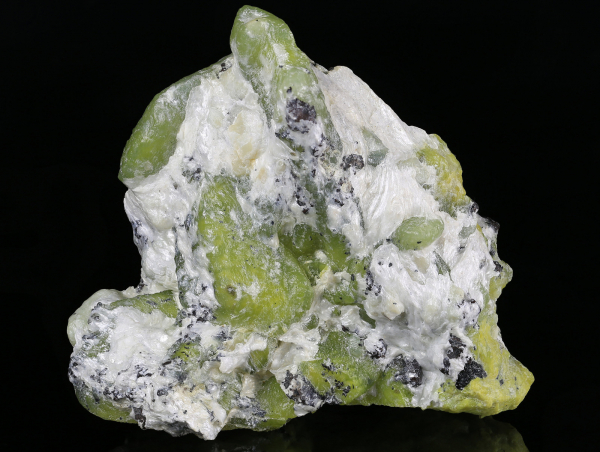Dypingdal Serpentine-magnesite deposit, Snarum, Modum, Buskerud, Norway
Mg3Si2O5(OH)4
The most common species of the serpentine subgroup are lizardite, chrysotile, and antigorite
Crystal System: trigonal (lizardite) or monoclinic (chrysotile, antigorite)
Colour: green, yellowish-green, white, yellow-brown, red-brown or black
Lustre: silky, waxy, vitreous
Habitus: microcrystalline, fibrous aggregates, massive
Hardness: 2.5 (lizardite, chrysotile), 3.5-4 (antigorite)
Fracture: uneven, splintery
Cleavage:perfect on {0001} in lizardite; good on {001} in antigorite
Density: 2.5-2.6 g/cm3
Origin and geological occurrence: serpentine occurs in hydrothermally-altered ultramafic rocks. Chrysotile and lizardite are low-T minerals, whereas antigorite is a high-T (T > 250°C) serpentine. Serpentine can also occur in metamorphosed impure dolostone
Samples:
 |
9E.1 Serpentine #phyllosilicates |
 |
9E.2 Serpentine #phyllosilicates |

